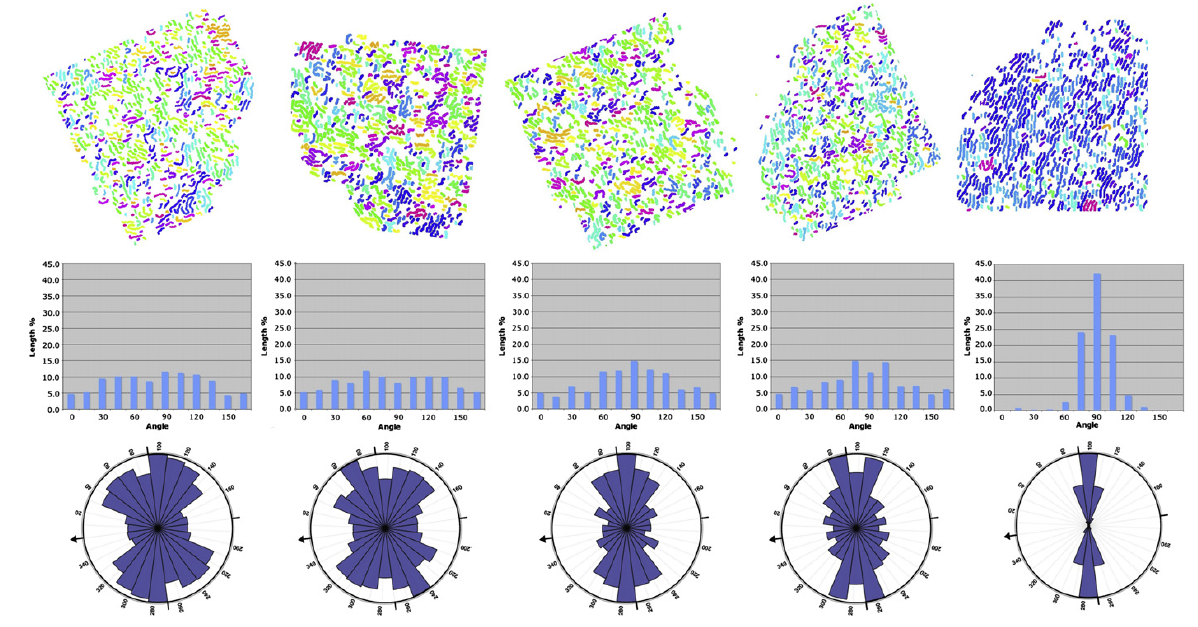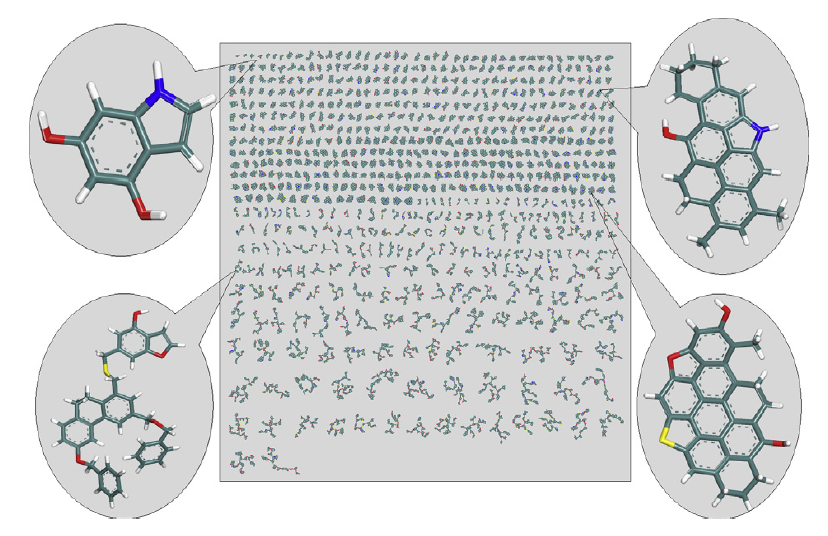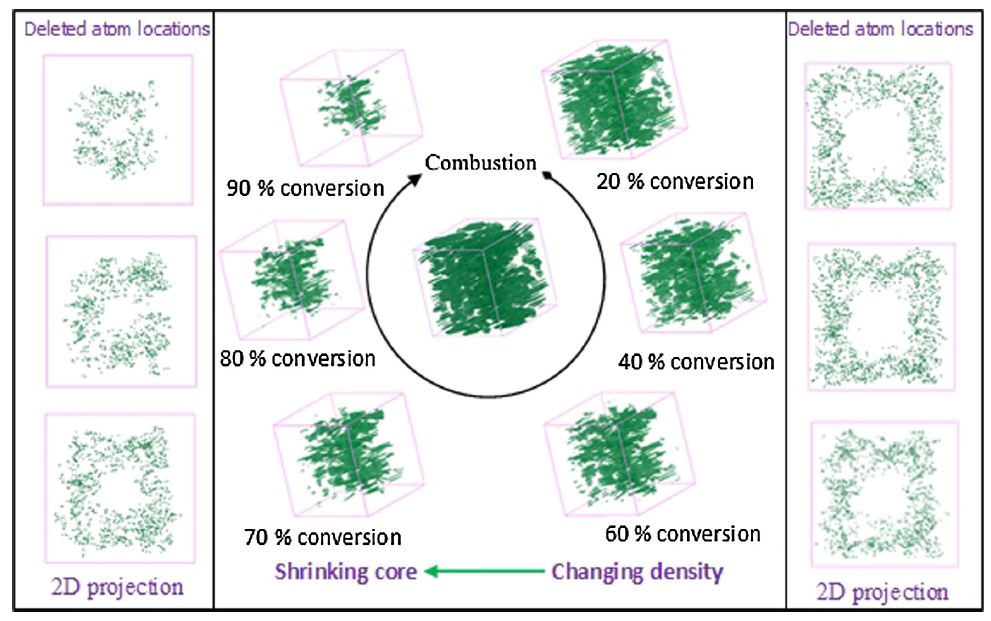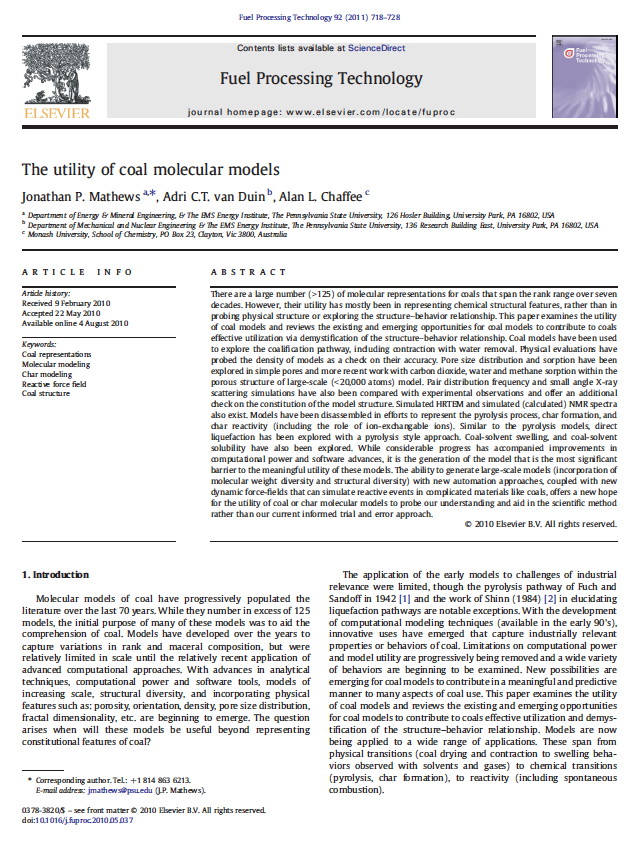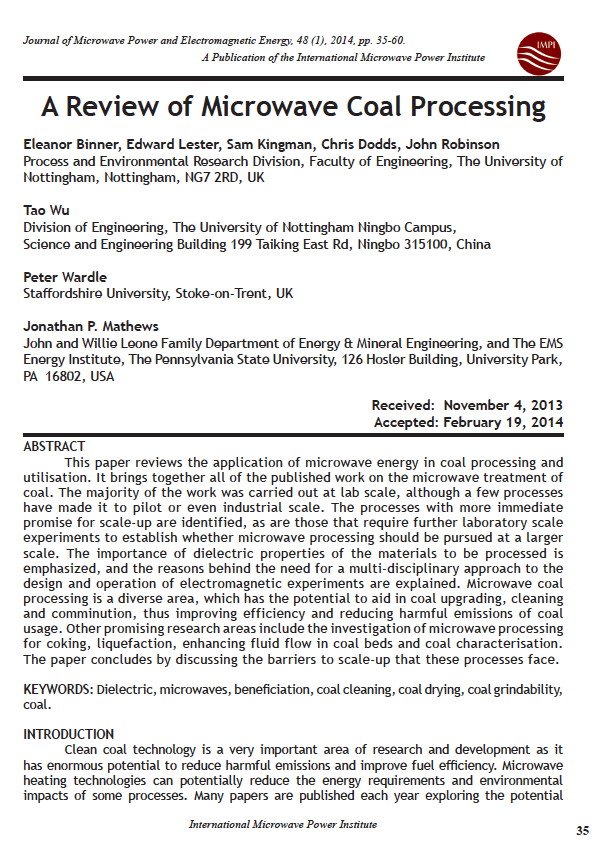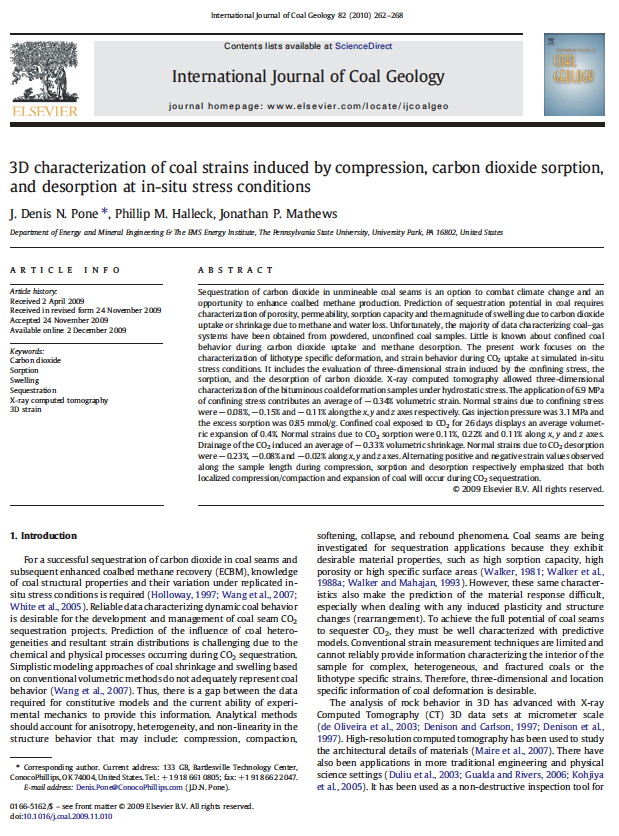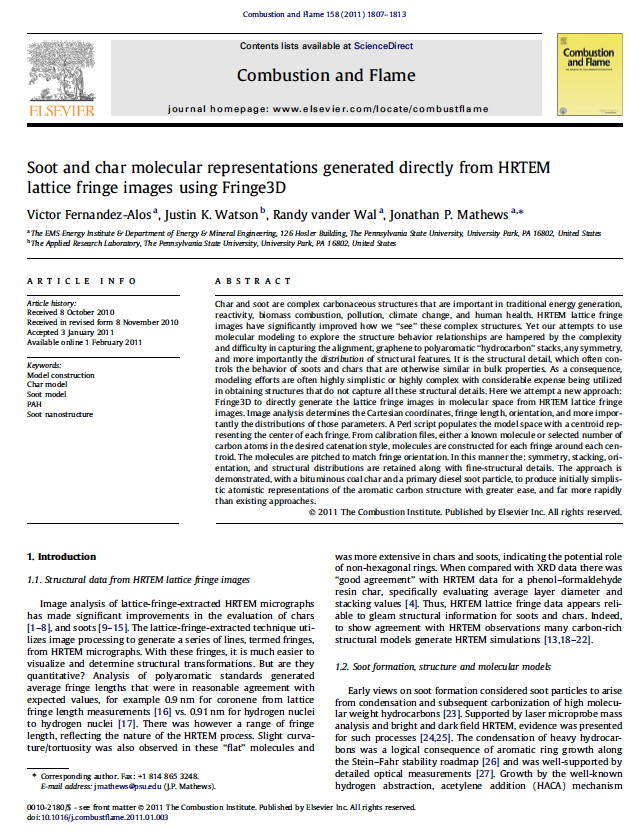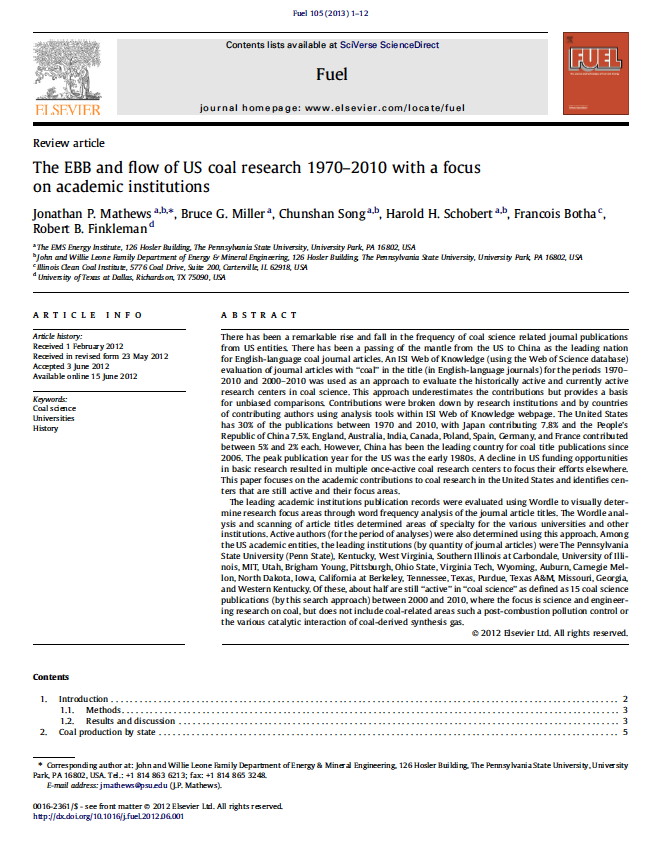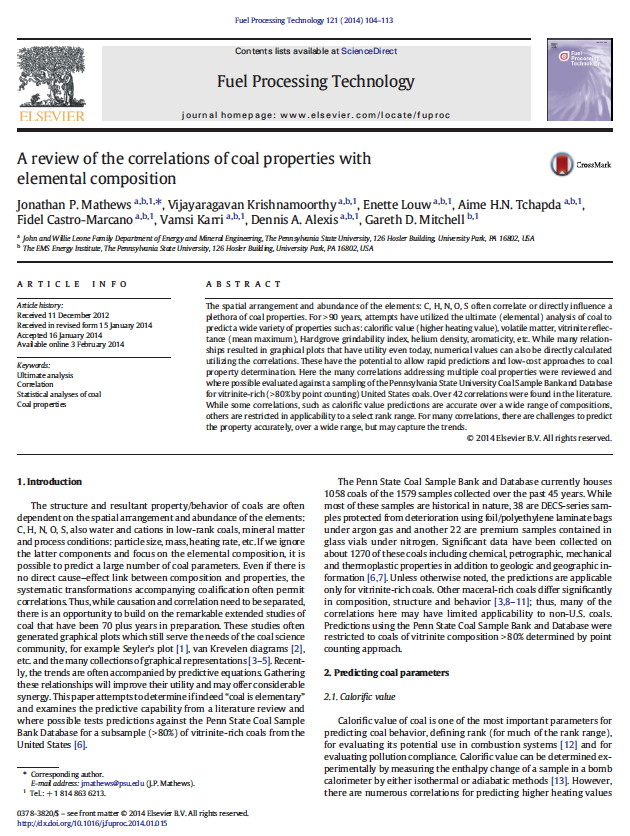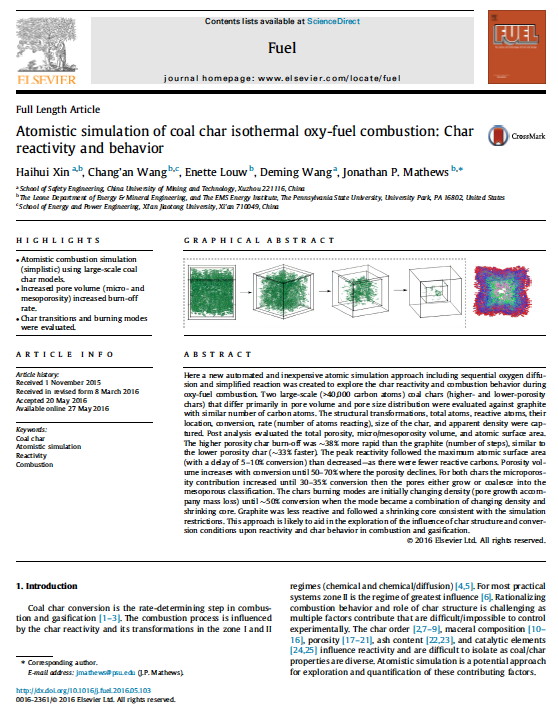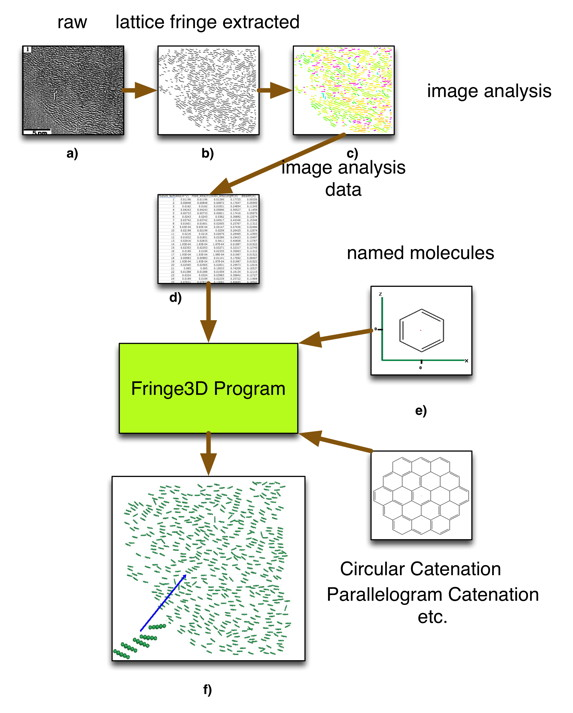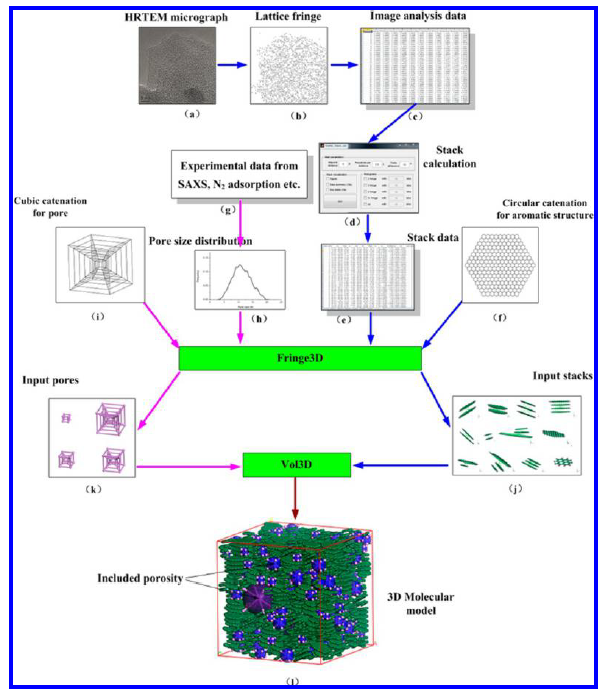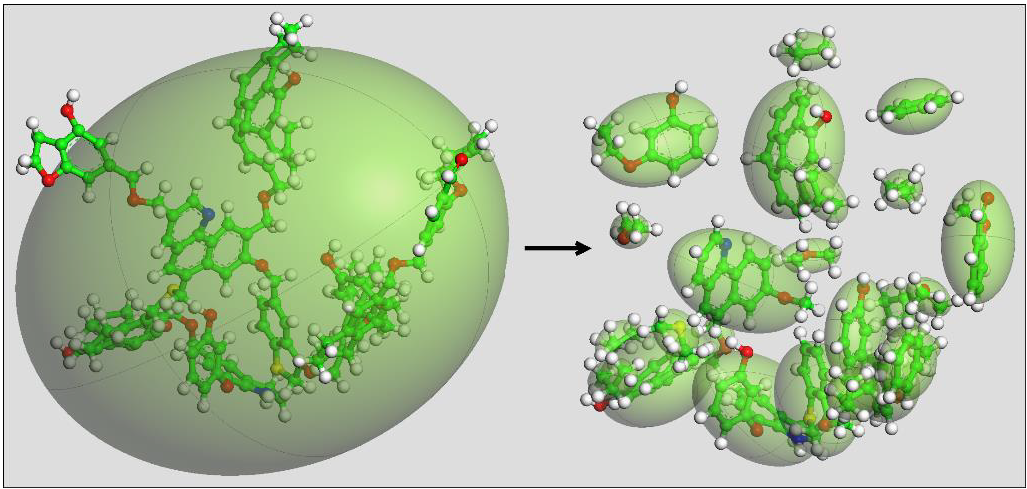
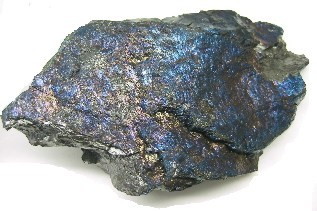
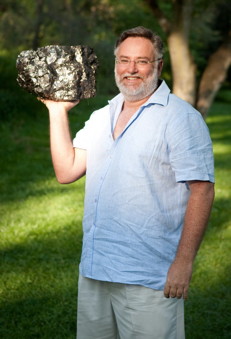
Coal Research
Dr. Jonathan Mathews is a coal scientist and an ACS fellow. His research interests address the relationship between coal structure and behavior spanning all ranks and nearly all aspects of coal use. He is well known for the creation and use of atomistic representations of coal and char but also employs advanced analytical techniques to inform and constrain the models. It is capturing the structural diversity, in a meaningful way, that has aided improving the rationalization of behavior. He is active in coalbed methane research along with CO2 sequestraion in coal. These investigations make use of image analysis and modeling for cleat structure and diversity, X-ray Computed Tomagraphy, and atomistic representations. He is also acitive in coal pyrolysis, coal combustion, oxy-fuel combustion, coal gasification, and coal liquefaction. He has extensive domestic (universities and National Labs) and international collaborations (China, England, South Africa, and Australia).
Coal Structure and Atomistic Representations
Dr. Mathews creates and uses the largest, and most complex atomistic representations of coal in the field. The group has produced several tools that allow for rapid-construction while improving the structural diversity (distributions), degree of ordering, and porous nature. Specifically Fringe3D uses image analysis of HRTEM lattice fringe micrographs to create distributions of aromatic structural features. These can be used directly, or placed in volumetric spaces while retaining the stacking using Vol3D. Scripts are used to modify these structures in an automated manner to include the distribution of functional groups, cross-linking extent, and molecular weight distribution. Analytical tools used include elemental analysis, LDiMS, optical microscopy, FT-iMS, NMR, solvent extraction, solvent swelling, image analysis etc. Two reviews on this subject (models and their use) are available. We are also active in kerogen modeling (work in progress).Coal Char (and Soot) Structure and Reactivity
For combustion, oxy-fuel combustion, and gasification it is the char structure that has the most significant influence on the reactivity. For bituminous coals these transformations from coal to char are highly dependent on the time-temperature histories, gas pressure, and the associated thermoplastic behavior imparting partial ordering and a complex pore size distribution. We evaluate char structure and behavior optically, by X-ray diffraction, Raman spectroscopy, HRTEM microscopy, and via SAXs. Reactivity is measured in TGA or horizontal tube reactors. Atomistic reporesentations of char are produced and their reactivity evaluated by our automated sequence of diffusion (molecular dynamics) and reactivity simulation (simplistic but rapid even with large-scale structures) or via a reactive dynamics simulations using ReaxFF. Soot can be examined in a similar manner.Coalbed Methane and Carbon Dioxide Sequestration
The diversity of coal expands from the reservoir scale to the Å scale! The process is complicated by rank, lithotype, and maceral differences, the diversity of the cleat structure, and the dynamic behavior of coal under sortion/desoprtion while under stress. Tools used to explore this complex behavior are pressure vessels, X-ray Computed Tomography, atomistic simulations, optical profilometry, SAX's, computaional mathematical modeling, etc. Our research has demonstrated the reduction in CO2 capacity due to the application of a stress field and the creation of new fractures using bursts of microwave stimulation. In particular, this area of research requires a multi-disciplinary approach.Example Image Gallery
Full Image Gallery Link is here
Software
Recognizing that the commercial codes were limited in the creation and use of large-scale atomistic representations, we have written a variety of unique image-analysis software and construction tools to aid in the creation of atomistic models that capture the structural diversity and partial ordering that is required to capture coal and char behavior. Large-scale structures are required to permit the inclusion of structural diversity and an appropriate pore size distrbuion. The scale has also required novel visualization, analysis, and simulation capabilities. Mostly they are stand alone Perl or MATLAB scripts. Some scripts however run within the Materials Studio platform for analysis and model manipulation. Full software description and listing is here.
Teaching
Currently Dr. Mathews teaches the writing intensive class EGEE 411W Energy Science and Engineering Laboratory (typically Spring and Fall) for the Energy Engineering program and a General Education Web class EGEE 101 Energy and The Environment (typically Spring, Summer, and Fall). Periodically, he also teaches the three-semester CAUSE class (EMSc 470W) with colleagues Drs. Elsworth and Eser with international travel to explore energy choices (UK, Iceland, Europe, Scandanavia, and New Zealand. He also teaches a coal structure and behavior course at the graduate level. The movies below are examples from the Energy and the Environment (Web) class).
